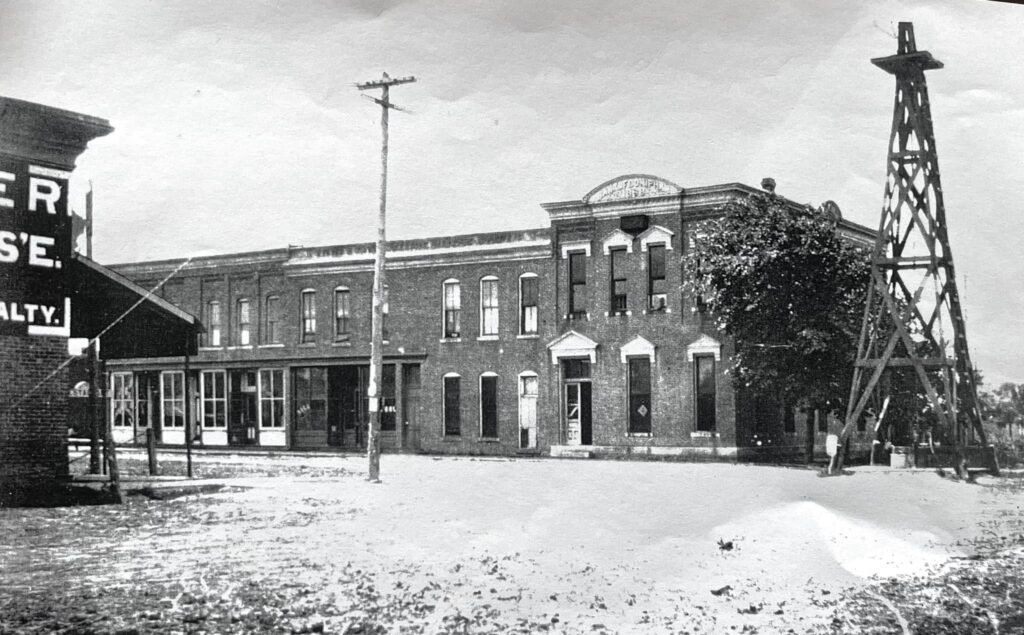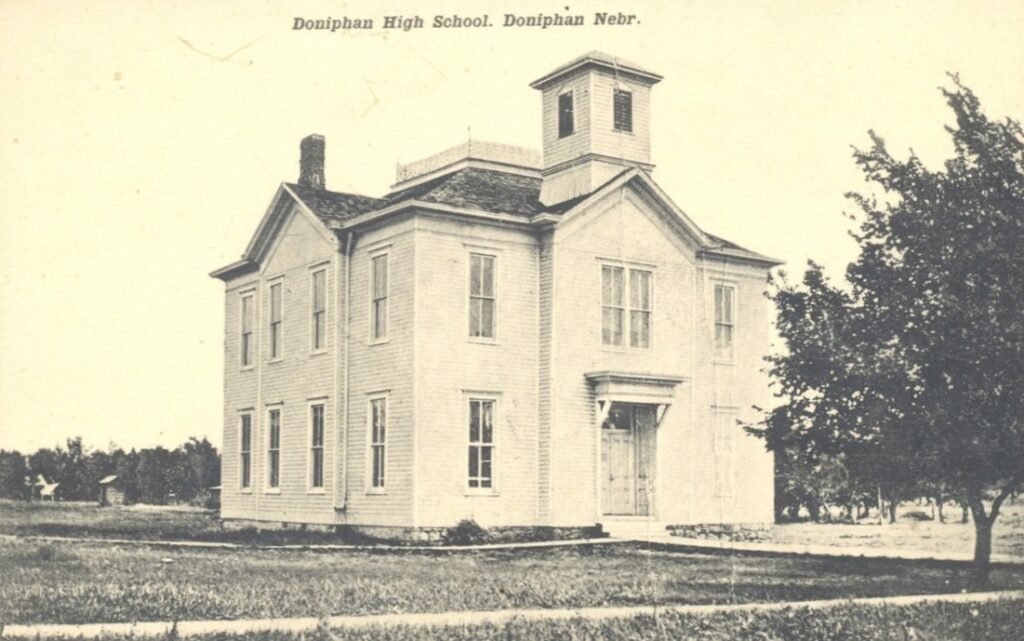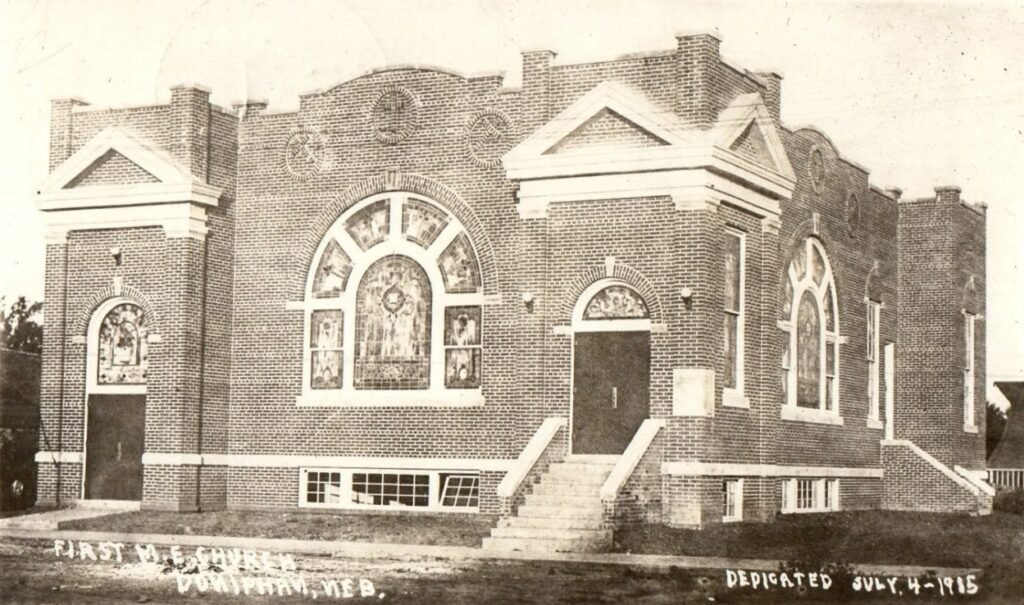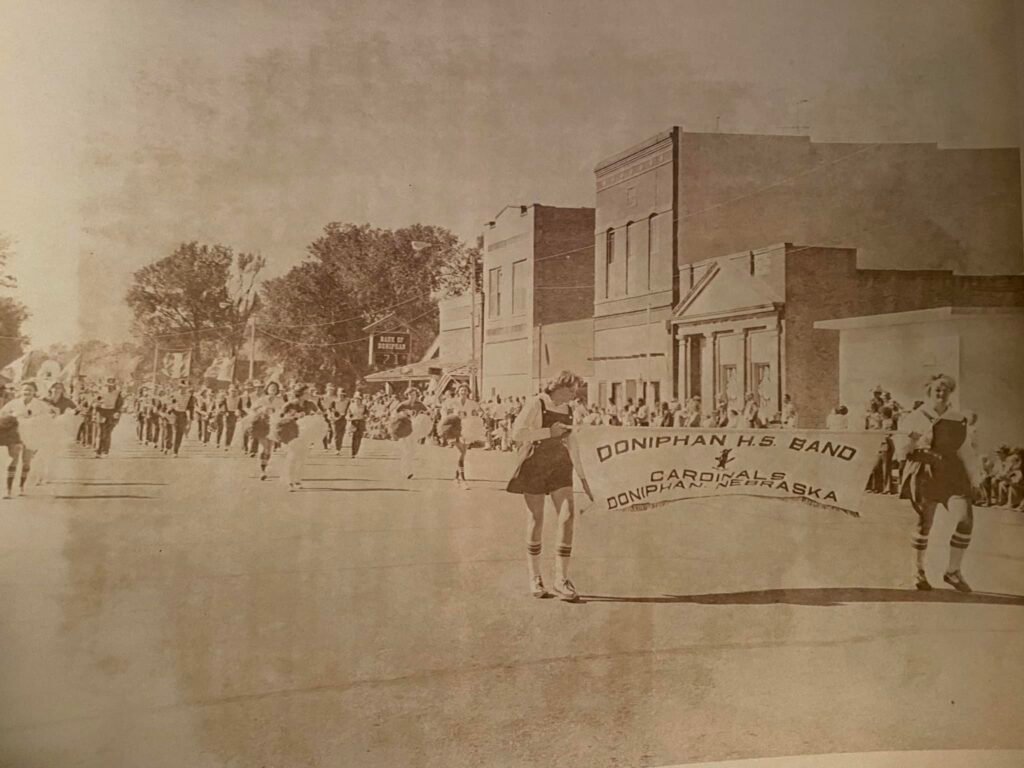
When the Union Pacific Railroad stretched its iron rails across Nebraska in the 1860s, it opened the prairie to settlement in ways the earlier trails and rivers never could. By the late 1870s a second line, the St. Joseph and Western Railroad, pushed its way westward between Hastings and Grand Island. In 1879, on the open land south of the Platte River, the coming together of the tracks and the ambitions of a landowner led to the founding of Doniphan.
The man behind the town was W. J. Burger, who owned the land where the railroad chose to run its line. Recognizing the opportunity, Burger platted a town, laid out lots, and encouraged settlement. He chose to name the place Doniphan in honor of Colonel John Doniphan, a prominent St. Joseph, Missouri, attorney for the railroad. That same year, the first store opened on Plum Street, run by the Upson Brothers, and the United States government recognized Doniphan with a post office in October, Samuel Beidelman serving as the first postmaster.
Doniphan was not built from nothing. Families had been farming the land nearby for several years. District 26, the first school district south of the Platte, was organized in 1873—six years before the town was laid out. Classes began in a small country schoolhouse, and after the town took shape, Emma Smith taught the first school term in Doniphan proper in 1879. A new schoolhouse rose the next year, and over the decades the community invested in its schools, culminating in the present Doniphan-Trumbull facility completed in 1982.

Religious life arrived as quickly as the town itself. Methodist circuit riders were holding services in the neighborhood as early as 1877. By 1880 Catholic families had organized a parish, and within a decade Lutheran settlers gathered for worship, later forming St. Paul’s Lutheran Church in 1915. The community supported several other congregations in its early decades, including Presbyterian and Christian fellowships, but today three churches remain central to Doniphan’s life—Methodist, Catholic, and Lutheran.
Growth was steady enough that by January 1884, thirty-three taxpayers petitioned the county to incorporate the settlement. Their petition was granted, and Beidelman, Burger, A. M. Sweeney, James Scudder, and D. O. Grice were appointed the first board of trustees. In those years commerce flourished. A flouring mill, erected by Burger in 1881, was set up on the public square. Businesses opened, lots were sold, and families came in from the east to farm, trade, and put down roots.

Yet Doniphan was not immune to hardship. In November 1887 a disastrous fire swept through the community. A telegram sent out by Burger carried grim news: “Half of Doniphan is in ashes.” The town rebuilt, but the event is remembered as a turning point, and a state historical marker has been approved to commemorate the tragedy.
The first Bank of Doniphan opened its doors in May 1886. A second institution, the Commercial Exchange Bank, was organized in 1911 but failed during the Great Depression, and in 1933 the Bank of Doniphan merged with the First National Bank of Grand Island. For more than thirty years Doniphan had no bank of its own, until November 17, 1965, when the Bank of Doniphan once again opened on Main Street, where it continues to operate.
Like many prairie towns, Doniphan welcomed the amenities of modern life gradually. Telephone service reached the village in 1904, electricity in 1912, and by 1918 the town had an organized fire team. Each of these developments reflected the determination of the citizens to keep pace with change while preserving their small-town identity.

Through all of these years, Doniphan’s population has risen and fallen but always remained resilient. In 1900 the village was still small, but by mid-century it had established itself as a stable community anchored by its schools, churches, and businesses. The census of 2000 recorded 763 residents, rising to 829 by 2010, and around 809 by 2020. Today, nearly 900 people call Doniphan home. Many residents work in Grand Island or Hastings, and the proximity of Interstate 80 keeps the town connected to wider markets and opportunities.
Community spirit has always been one of Doniphan’s greatest strengths. In 1912 local women organized the Ladies Cedar View Cemetery Association to ensure proper care for the burial ground. They raised money by hosting what was first called Cemetery Bazaar Day, now known as the Cedar View Cemetery Fall Festival. Held every first Saturday in October, the festival draws residents and former townspeople back to Doniphan for a day of fellowship, food, and celebration. A reminder to all of us, that a town’s story is about the bonds of community that keep people tied to a place across generations.
From its beginnings as a platted stop along the railroad to its present role as a small Nebraska town, Doniphan has remained true to its founding purpose—a place to live, work, worship, and raise families on the fertile land south of the Platte. Its history reflects the broader story of settlement in Nebraska: opportunity made possible by the railroad and sustained by the will of its families.
Source
Partridge, Dennis N., “Nebraska Community Histories: A History of Doniphan, Hall County, Nebraska.” Nebraska Genealogy. September 27, 2025.
Back to: Nebraska Community Histories
Discover more from Nebraska Genealogy
Subscribe to get the latest posts sent to your email.

